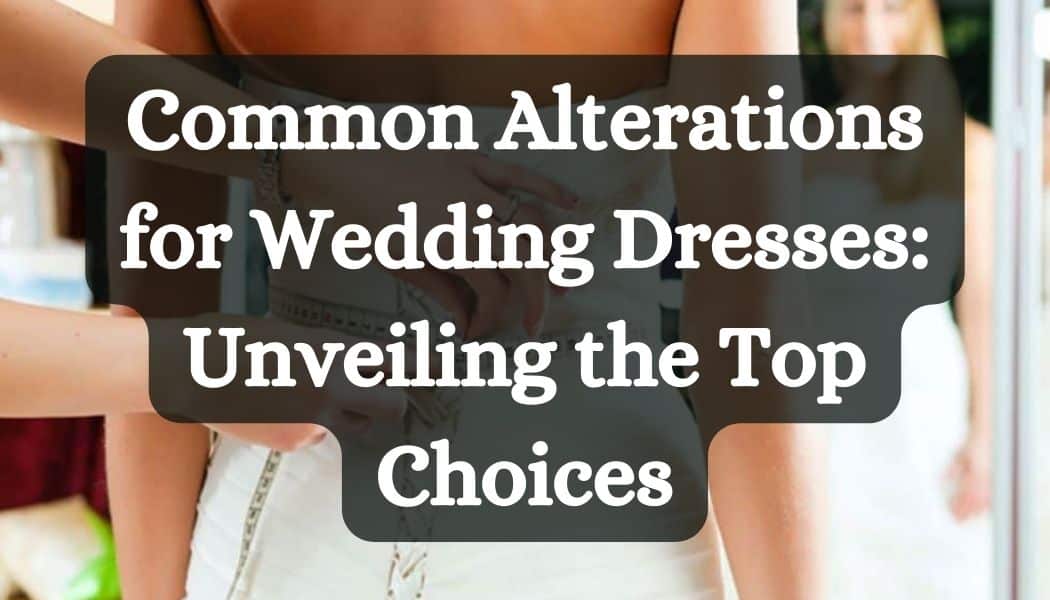
When it comes to your special day, finding the perfect wedding dress is just the beginning. Ensuring your dress fits like a dream is crucial to achieving a stunning bridal look. That’s where wedding dress alterations come into play. This article will explore the most common alterations brides often require to achieve that flawless fit. From hemline adjustments to bodice alterations and beyond, we’ll guide you through the top choices to make your wedding dress truly yours.
Table of Contents
Understanding the Need for Alterations
When it comes to your wedding day, your dress should be perfect. While finding the ideal wedding gown is undoubtedly a thrilling experience, it’s essential to acknowledge that most brides will require some alterations to achieve that flawless fit. This article will look at the factors influencing the need for wedding dress alterations, going beyond mere aesthetics. By understanding the significance of sizing, fit, and style preferences, you’ll better appreciate why alterations play a pivotal role in creating your dream bridal ensemble.
Sizing plays a fundamental role in the need for alterations. Off-the-rack dresses are typically designed to cater to standard size ranges, but every bride possesses unique measurements and proportions. This means that even if you find a dress that aligns with your approximate size, it may still require adjustments to accommodate your specific body shape. Whether taking in the waistline, shortening the hem, or altering the bust, skilled sewists can expertly tailor the dress to your precise measurements, ensuring a comfortable and flattering fit.
Fit is another critical aspect that often necessitates alterations. Each bride has a vision of how she wants her wedding dress to look and feel. You may prefer a more form-fitting silhouette or a looser, flowing gown. Alterations can help achieve your desired fit by adjusting the bodice, neckline, or sleeves to match your style and enhance your natural curves. By customizing the fit to your preferences, you can make the dress an extension of your unique personality.
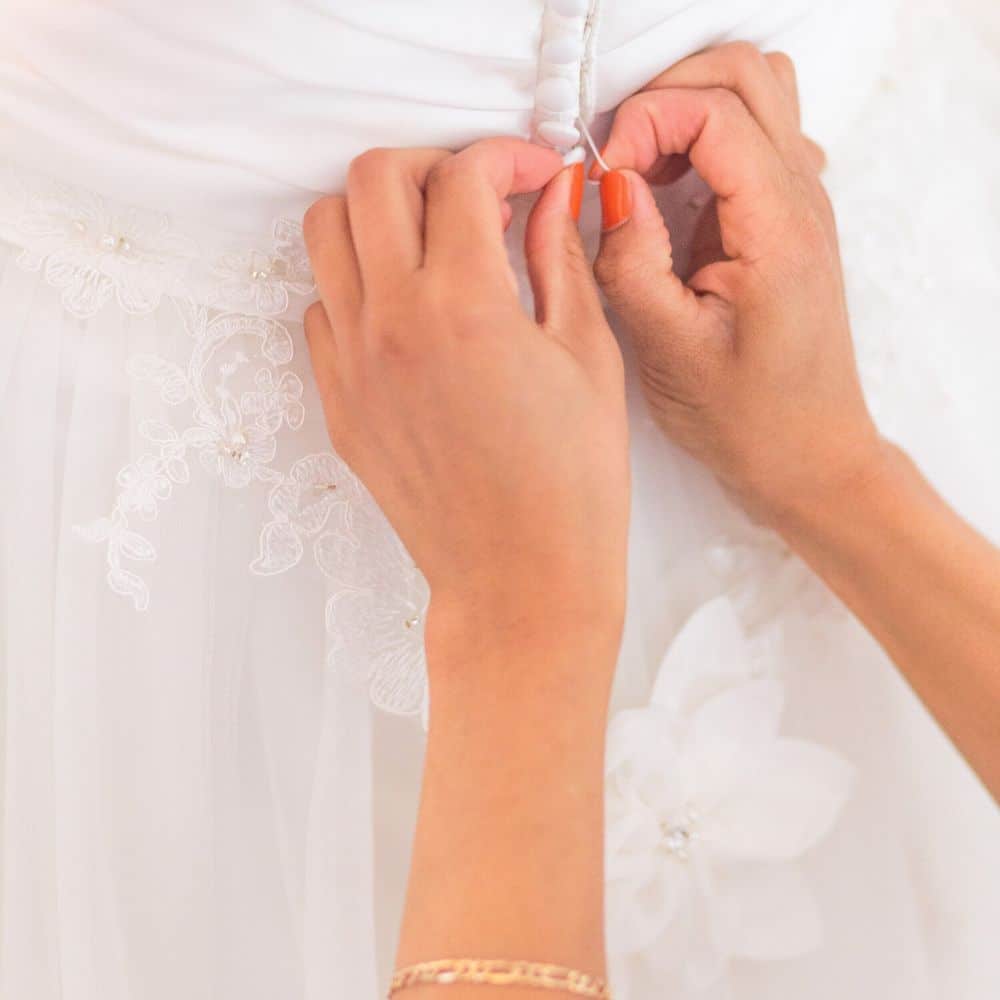
Style preferences also play a significant role in the need for alterations. Wedding dresses come in various styles, from traditional ball gowns to modern sheath dresses. Perhaps you’ve fallen in love with a particular style but wish to make a few modifications to make it your own. Alterations allow you to personalize your dress, whether adding intricate lace appliqués, removing embellishments for a minimalist look, or altering the length to suit your desired level of formality. By working closely with a skilled sewist, you can transform the dress into a one-of-a-kind masterpiece that perfectly reflects your style and vision.
Top Common Alterations
Hemline Adjustments
- Reasons for Hemline Alterations When achieving the perfect wedding dress length, hemline alterations are often necessary. Factors such as your height, choice of footwear, and desired aesthetic can all influence the need for adjusting the hemline. Whether you prefer a floor-length gown, a tea-length dress, or something in between, hemline alterations ensure that your dress drapes gracefully and compliments your overall silhouette.
- Types of Hemline Alterations There are various ways to alter the hemline of a wedding dress to achieve the desired length and style. Common types of hemline alterations include:
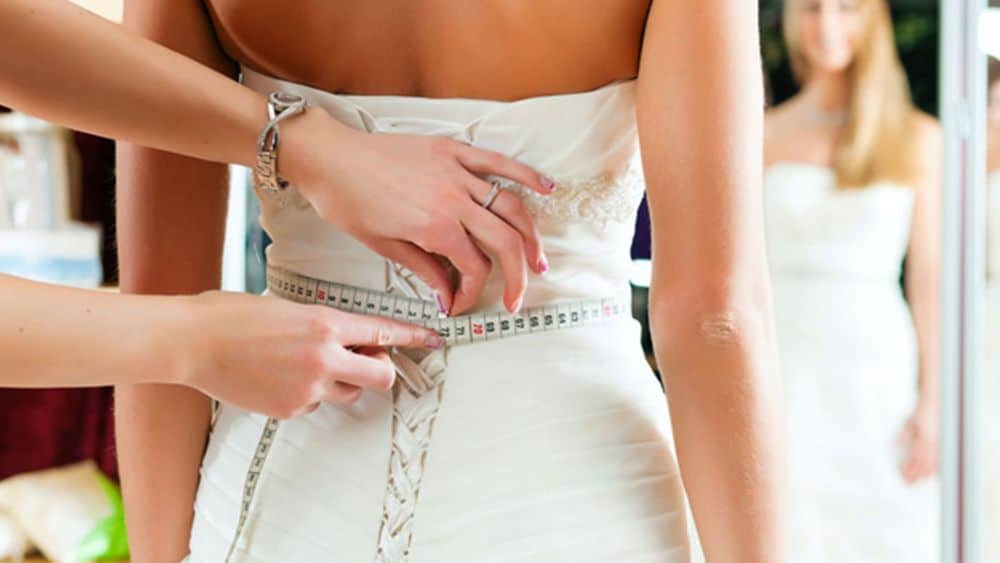
Bodice Alterations
- Modifying Neckline and Straps The bodice of a wedding dress plays a vital role in defining its overall style and enhancing the bride’s silhouette. Alterations to the neckline and straps can completely transform the look and feel of the gown. Whether you desire a sweetheart neckline, plunging V-neck, or off-the-shoulder style, or want to add or remove straps, a skilled sewist can help bring your vision to life.
- Reshaping the Bodice for a Better Fit Every bride has a unique body shape, and altering the bodice ensures a flattering and comfortable fit. Common bodice alterations include taking in or letting out the sides, adjusting the bust area for better support, and reshaping the waistline. These alterations allow the dress to hug your curves in all the right places, accentuating your natural beauty on your special day.
Waistline Alterations
- Nipping in or Letting Out the Waist The waistline of a wedding dress can significantly impact the overall fit and silhouette. Whether you wish to create a more defined waist or provide extra breathing room, waistline alterations can make a notable difference. Skilled sewists can expertly adjust the waistline by taking it in or letting it out, ensuring a comfortable and flattering fit that complements your body shape.
- Creating a More Defined Waistline For brides who desire a more pronounced hourglass figure, waistline alterations can help achieve a defined waist. This can be achieved by adding boning or corsetry to the bodice, incorporating a belt or sash, or strategically adjusting the dress seams to create a tailored and contoured look.
Adding or Removing Embellishments
- Personalizing the Dress with Additional Details Wedding dress alterations offer an excellent opportunity to personalize your gown with additional embellishments. Whether you envision delicate lace appliqués, sparkling beadwork, or intricate embroidery, a skilled seamstress can incorporate these details to make your dress truly unique and reflective of your style and personality.
- Removing Excess Embellishments for a Cleaner Look Conversely, some brides may prefer a more minimalist aesthetic or wish to remove embellishments that no longer align with their vision. Alterations can involve removing excess beading, sequins, or other embellishments to create a cleaner, more understated look while maintaining the dress’s original design and integrity.
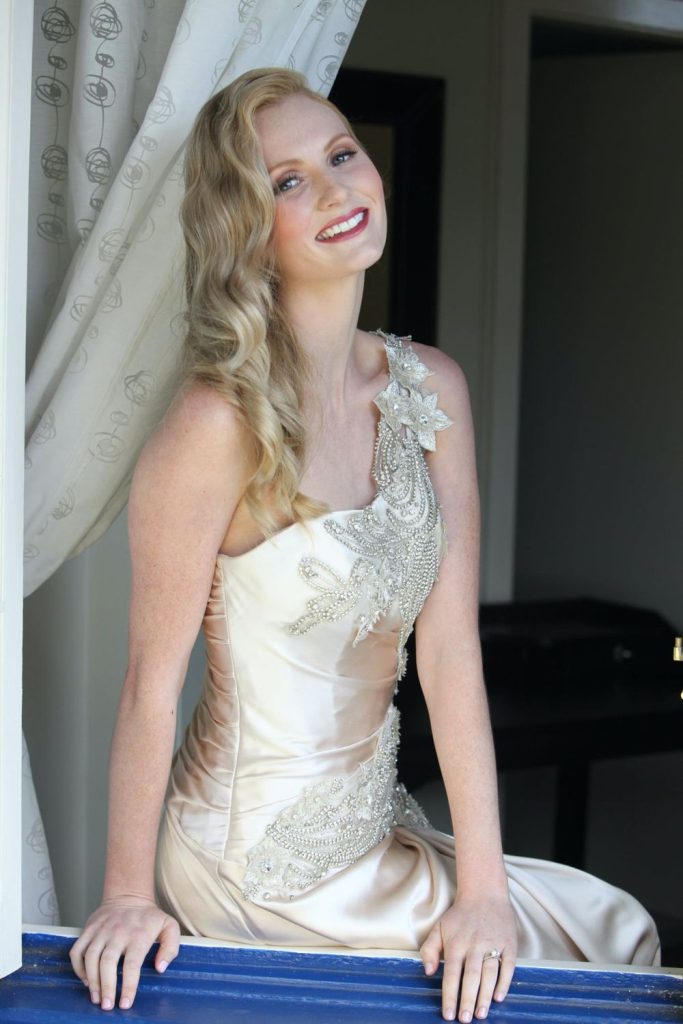
Train Alterations
- Shortening or bustling the Train Wedding dress trains add an elegant and dramatic touch, but they may not always be practical for the entire duration of your special day. Train alterations allow you to customize the length to your preference, ensuring ease of movement and comfort. Shortening or bustling the train with hidden hooks, buttons, or ties enables you to transition effortlessly from the ceremony to the reception.
- Enhancing Movement and Convenience Train alterations also focus on enhancing the overall movement and convenience of the dress. Skilled seamstresses can add hidden loops or ribbons to hold the train off the ground when needed, allowing you to dance, mingle, and enjoy your celebration without worrying about tripping or dragging the fabric.
Factors to Consider When Choosing Wedding Dress Alterations
Several essential factors should be considered when choosing wedding dress alterations to ensure a smooth and successful alteration process. From budget considerations to effective communication with the alterations specialist, paying attention to these factors will help you achieve the desired outcome for your dream gown.
Budget Considerations: Before embarking on any alterations, it’s essential to establish a realistic budget for your wedding dress alterations. The cost of alterations can vary depending on the complexity of the changes needed and the expertise of the sewist or tailor. Research local alteration services and determine their pricing structure to ensure they align with your budget. Balancing your alteration goals and financial constraints is crucial to avoid surprises or unnecessary stress.

Timing and Scheduling Alterations: Timing is critical in ensuring a successful alteration process. It’s recommended to start planning and scheduling your alterations well in advance, ideally several months before your wedding day. This allows sufficient time for multiple fittings and any necessary adjustments. Remember that famous alteration specialists may have a busy schedule, particularly during peak wedding seasons, so booking your appointments early is advisable to secure their services. Allowing ample time allows you to avoid rushing the process and ensure your dress is ready and fits perfectly when your big day arrives.
Consulting with a Professional Seamstress or Tailor: When altering your wedding dress, it’s crucial to consult a professional and experienced seamstress or tailor. Seek recommendations from friends, family, or bridal boutiques to find reputable alteration specialists specializing in wedding dresses. Schedule consultations to discuss your alteration goals, evaluate their expertise, and assess their ability to understand and execute your vision. A skilled professional will guide, make expert recommendations, and ensure that your dress alterations are carried out precisely and carefully.
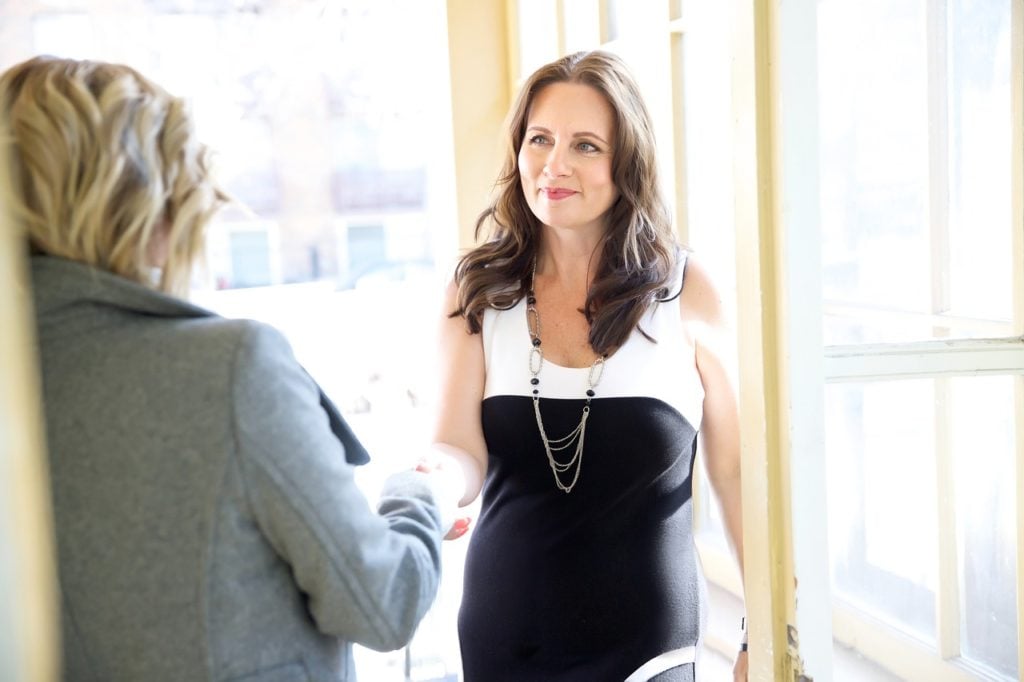
Communication with the Alterations Specialist: Effective communication with the alterations specialist is vital to achieving the desired outcome for your wedding dress. Clearly articulate your alteration preferences, ensuring that you both have a shared understanding of your expectations. Be open and honest about your vision, concerns, and any details you want to incorporate or modify. Listen to the professional’s advice and expertise; they may suggest alterations that enhance your dress’s fit and overall look. Maintaining clear and ongoing communication throughout the alteration process will help create a positive working relationship and ensure any adjustments are made to your satisfaction.
Conclusion
In conclusion, wedding dress alterations are essential in achieving the perfect bridal ensemble. From hemline adjustments and bodice alterations to waistline modifications and personalized embellishments, these alterations can transform a beautiful dress into one that fits flawlessly and reflects your unique style. By prioritizing alterations and working with skilled professionals, you can ensure that your wedding dress enhances your natural beauty, boosts your confidence, and creates an unforgettable bridal look on your special day. Embrace the transformative effect of alterations and embrace the opportunity to make your wedding dress truly yours.
Summary: Wedding Dress Alterations
- Sizing, fit, and style preferences influence the need for wedding dress alterations.
- Sizing alterations ensure a comfortable and flattering fit based on unique measurements.
- Fit alterations customize the dress to desired silhouette, neckline, and sleeves.
- Style alterations personalize the dress with lace appliqués, embellishment additions, or removals.
- Hemline alterations adjust the length for floor-length, tea-length, or asymmetrical designs.
- Bodice alterations modify the neckline and straps and reshape them for a better fit and silhouette.
- Waistline alterations define the waist or provide extra room for comfort.
- Train alterations customize the length and enhance movement and convenience.
- Factors to consider include budget, timing, consulting with a professional, and effective communication with the alterations specialist.
FAQ: Achieving the Perfect Fit for Your Special Day
Why do most brides require wedding dress alterations?
Most brides require wedding dress alterations because off-the-rack dresses are designed to cater to standard size ranges, while every bride has unique measurements and proportions. Alterations ensure a comfortable and flattering fit that accommodates their specific body shape.
What are the common types of hemline alterations?
The common types of hemline alterations include traditional hemming (shortening or lengthening the dress evenly), layered hemming (adjusting the hemline of gowns with multiple layers), asymmetrical hemline (creating a unique and modern look by altering the hemline to be higher on one side or featuring a high-low design), and scalloped or lace trim (adding or removing delicate lace trim or scalloped edges to enhance the hemline).
How can bodice alterations enhance the overall look of a wedding dress?
Bodice alterations can enhance the overall look of a wedding dress by modifying the neckline and straps to create different styles and silhouettes. Additionally, reshaping the bodice through adjustments such as taking in or letting out the sides, adjusting the bust area, and reshaping the waistline ensures a flattering and comfortable fit that accentuates the bride’s natural curves.
What can waistline alterations do to improve the fit of a wedding dress?
Waistline alterations can significantly impact the fit and silhouette of a wedding dress. By nipping in or letting out the waist, the dress can be tailored to provide a more defined waist or offer extra breathing room, ensuring a comfortable and flattering fit that complements the bride’s body shape.
How can wedding dress alterations help personalize the gown?
Wedding dress alterations offer an excellent opportunity to personalize the gown with additional details. Skilled seamstresses can incorporate delicate lace appliqués, sparkling beadwork, or intricate embroidery to make the dress truly unique and reflective of the bride’s style and personality. Conversely, alterations can also involve removing excess embellishments for a cleaner, more understated look while maintaining the dress’s original design and integrity.












